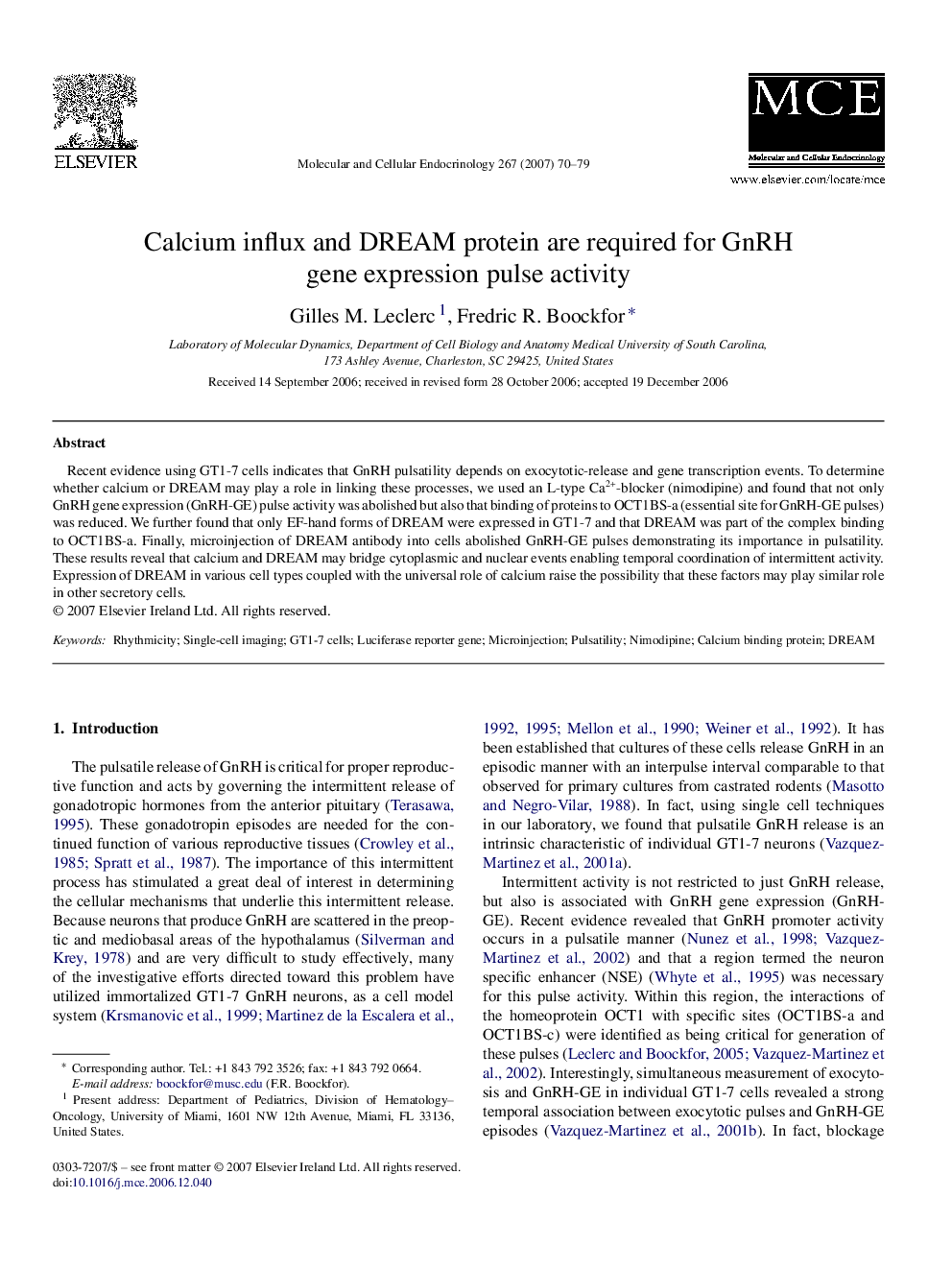| Article ID | Journal | Published Year | Pages | File Type |
|---|---|---|---|---|
| 2198028 | Molecular and Cellular Endocrinology | 2007 | 10 Pages |
Recent evidence using GT1-7 cells indicates that GnRH pulsatility depends on exocytotic-release and gene transcription events. To determine whether calcium or DREAM may play a role in linking these processes, we used an L-type Ca2+-blocker (nimodipine) and found that not only GnRH gene expression (GnRH-GE) pulse activity was abolished but also that binding of proteins to OCT1BS-a (essential site for GnRH-GE pulses) was reduced. We further found that only EF-hand forms of DREAM were expressed in GT1-7 and that DREAM was part of the complex binding to OCT1BS-a. Finally, microinjection of DREAM antibody into cells abolished GnRH-GE pulses demonstrating its importance in pulsatility. These results reveal that calcium and DREAM may bridge cytoplasmic and nuclear events enabling temporal coordination of intermittent activity. Expression of DREAM in various cell types coupled with the universal role of calcium raise the possibility that these factors may play similar role in other secretory cells.
